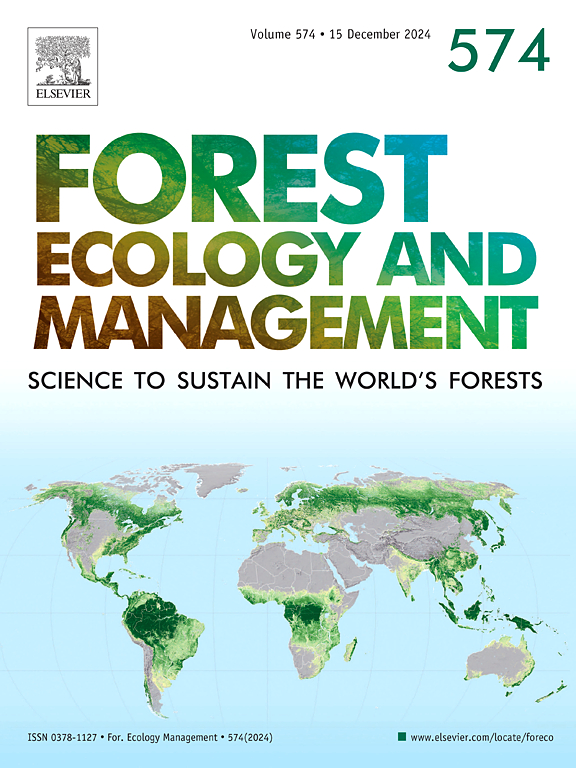Identification of damage severity in Fraxinus excelsior L. trees caused by ash dieback using multisensory and multitemporal UAV imagery
IF 3.7
2区 农林科学
Q1 FORESTRY
引用次数: 0
Abstract
The extended spread of ash dieback in Europe has far-reaching consequences for Fraxinus excelsior L. populations. The progression of the disease leads to characteristic symptoms, particularly within the tree crowns. To date, assessing the damage severity of each individual tree typically requires in-field inspections. However, UAVs equipped with RGB, thermal, and multispectral sensors offer cost-effective and objective possibilities. This study relied on such analyses and focused on two ash seed orchards in Baden-Wuerttemberg, Germany, where visual inspections were compared with multisensorial data obtained in spring, summer and autumn of 2022 and 2023. The calculated RGB and multispectral vegetation indices were able to significantly discriminate between different degrees of damage due to ash dieback; in contrast, thermal data were less reliable and linked to different dynamics. Novel thresholds applied to the vegetation indices enabled a classification of mild and severe damage with an overall accuracy of 74.9 % for the multispectral index DVI (Difference Vegetation Index) and 73.0 % for the RGB index GRVI (Green-Red Vegetation Index). Combining RGB and multispectral indices further improved the overall accuracy to 77.2 %. The presented workflow offers forest practitioners an accessible toolset for evaluating the health status of ash populations affected by ash dieback.
求助全文
约1分钟内获得全文
求助全文
来源期刊

Forest Ecology and Management
农林科学-林学
CiteScore
7.50
自引率
10.80%
发文量
665
审稿时长
39 days
期刊介绍:
Forest Ecology and Management publishes scientific articles linking forest ecology with forest management, focusing on the application of biological, ecological and social knowledge to the management and conservation of plantations and natural forests. The scope of the journal includes all forest ecosystems of the world.
A peer-review process ensures the quality and international interest of the manuscripts accepted for publication. The journal encourages communication between scientists in disparate fields who share a common interest in ecology and forest management, bridging the gap between research workers and forest managers.
We encourage submission of papers that will have the strongest interest and value to the Journal''s international readership. Some key features of papers with strong interest include:
1. Clear connections between the ecology and management of forests;
2. Novel ideas or approaches to important challenges in forest ecology and management;
3. Studies that address a population of interest beyond the scale of single research sites, Three key points in the design of forest experiments, Forest Ecology and Management 255 (2008) 2022-2023);
4. Review Articles on timely, important topics. Authors are welcome to contact one of the editors to discuss the suitability of a potential review manuscript.
The Journal encourages proposals for special issues examining important areas of forest ecology and management. Potential guest editors should contact any of the Editors to begin discussions about topics, potential papers, and other details.
 求助内容:
求助内容: 应助结果提醒方式:
应助结果提醒方式:


